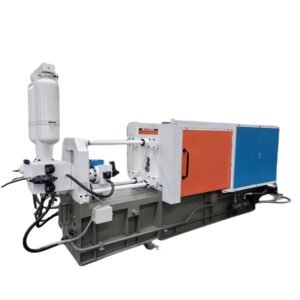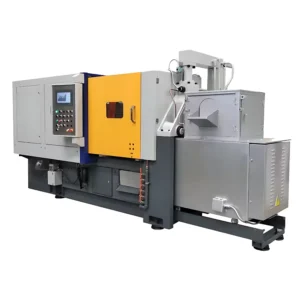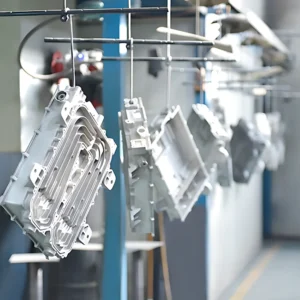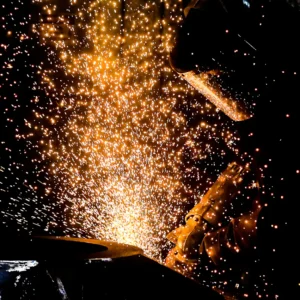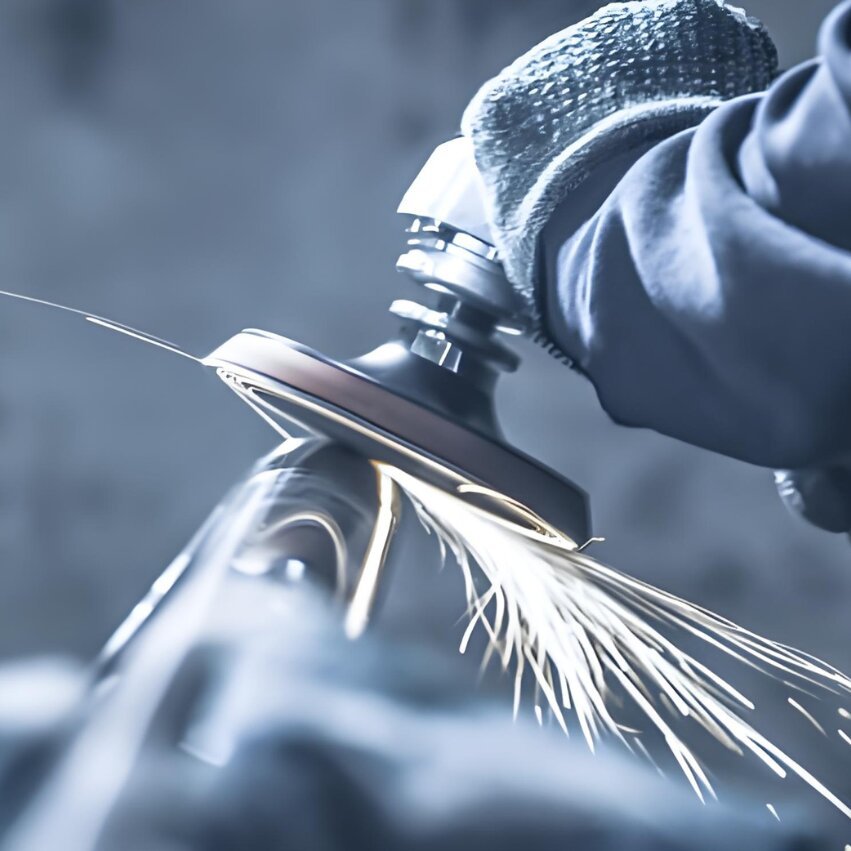In the metal manufacturing industry, metal surface treatment is also a part of precision machining. Through correct surface treatment, not only the appearance can be improved, but also the durability of metal parts can be improved.
In this article, we will take you through the basics of metal surface treatment, its importance, types of metal surface treatment, and test methods for measuring surface finish, and provide guidance to help your project.
Surface Finishes Basics
Surface treatment is a process of processing metal surfaces. It mainly improves the surface finish of metals by polishing, grinding, anodizing, etc., and improves durability and appearance quality.
In addition, the type of metal surface treatment is as important as the processing technology. Depending on the end use of the product, a specific surface treatment method is selected. For example, the aerospace industry and the automotive industry have the highest requirements for fine surface treatment. In addition, such fine surface treatment may not be required in some other industries.
Importance of Surface Finishes
Surface treatment is not only to improve the appearance of the product, but also to effectively protect the underlying metal from chemicals, physical loss and moisture. In addition, surface treatment can enhance conductivity and reduce friction, thereby extending the service life of the product and reducing maintenance and replacement costs.
At the same time, the benefits of surface treatment include:
Improve Corrosion Resistance
Corrosion is the main cause of damage to metal surfaces and components. A protective oxide film or metal layer can be formed on the metal surface through anodizing, galvanizing and other processing technologies. If the surface is properly treated, it can provide better protection and extend the service life.
Simplify the Manufacturing Process
Reasonable surface treatment can solve potential metal defects in the early stages of manufacturing and reduce the time and cost of subsequent processing and repair. For example: Using appropriate surface pretreatment in casting production can improve the adhesion of the coating, thereby reducing the scrap rate in production.
Improve Product Appearance
For many customers, the appearance and performance of the product are equally important. High-quality surface finish can make your product look as good as before from the surface. At the same time, it can not only guarantee the performance of the product, but also ensure the beauty of the product and improve market competitiveness.
Increase Functionality
Metal surface treatment can not only improve the appearance and durability of the product, but also give the product more functions. For example, conductive coating and insulating coating can provide electrical insulation, so they are more commonly used in the electronics and electrical industries. This is because it can effectively prevent the accidental passage of current, thereby improving the safety of use.
8 Types Metal Surface Finishes
There are many types of metal surface treatment technologies. Knowing their differences will help you choose the right processing technology for your project. Here are a few metal surface treatment technologies you need to know:
Electroplating
Electroplating, also known as electrodeposition, is a metal surface treatment technique. In this process, the metal is immersed in an electrolyte containing the desired plating metal ions, and these metal ions are attracted to the metal surface by applying an electric current to form a thin, uniform coating. This processing technology not only improves corrosion resistance and hardness, but also improves aesthetics, for example: chrome plating can achieve a mirror-like gloss effect.
Electroplating is a very important processing technology in various industries. For example, zinc plating can protect steel from corrosion, while gold plating can enhance the conductivity of electronic connectors.
Anodizing
This type of surface treatment is usually used for light metals such as aluminum and titanium. During the processing, the metal is placed in an electrolyte as an anode, and an electric current is applied to the electrolyte to electrolyze and form an oxide film on the metal surface to prevent corrosion of the parts. In addition, the oxide film also has good insulation properties, so this processing technology is usually used in fields with high electrical insulation requirements, such as the casing of electronic equipment.
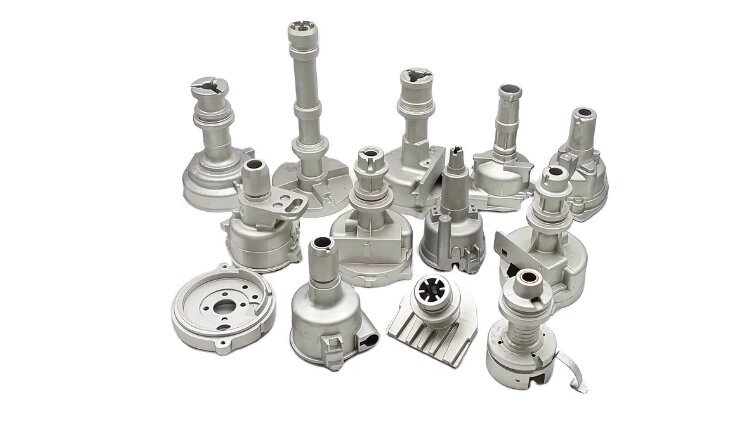
Polishing
Polishing is the process of rubbing abrasives or polishing agents on the metal surface to gradually remove the fine surface unevenness and oxides, thereby achieving a smooth and mirror-like effect. This not only improves the appearance of the metal surface, but also reduces the microscopic defects on the surface of the material.
In addition, after polishing, the metal’s anti-pollution ability can be improved, and it can also be easier to clean and maintain. In industries such as automobiles, jewelry and kitchenware, polishing processing technology is a very important step.
Powder Coating
Powder coating is a process of spraying dry powder coating evenly on metal surfaces by electrostatic spraying. In this process, the metal surface needs to be thoroughly cleaned and pre-treated first, and then the charged powder is sprayed onto the metal using a spray gun. The powder adheres to the metal surface under the action of electrostatic force. After that, the metal parts are placed in a curing furnace for heating, and the powder melts to form a uniform coating.
Powder coating not only has good anti-corrosion and anti-aging properties, but also provides rich colors and textures. It is widely used in the automotive, furniture, home appliances and construction industries.
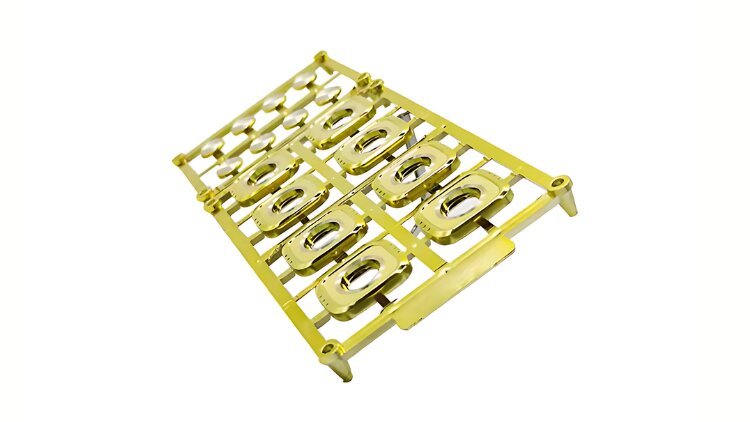
Sandblasting
Sandblasting is the use of high-speed spraying of sand or other abrasives to impact and grind metal surfaces. In this process, the operator uses a special sandblasting machine to spray abrasives such as quartz sand, silicon carbide or glass beads onto the metal surface under high pressure.
This physical impact can not only remove rust, oil stains and old coatings on the metal surface, but also remove small flaws and burrs on the surface. Therefore, a more uniform and beautiful surface can be achieved. This is common in the surface treatment of automobiles and cabinets.
Pickling
Pickling is also a surface treatment technique for metals, which can remove oxides, rust and other impurities from the metal surface. In this process, the metal needs to be immersed in an acid solution, usually sulfuric acid or hydrochloric acid, because it can effectively remove impurities and oxides from the metal surface.
During the manufacturing process, if the metal is heat-processed, an oxide layer will form on it. In this case, pickling is required. Pickling not only cleans the metal surface, but also restores the metal’s luster, providing a clean and uniform base for subsequent processing such as electroplating or painting.
Grinding
This is a processing technique that can effectively remove uneven metal surfaces. Operators use grinding equipment such as angle grinders or surface grinders with grinding wheels or other grinding tools to quickly rotate and grind the metal surface. Through this physical grinding, tiny bumps, scratches and other substances on the metal surface can be effectively removed to achieve a smooth and fine surface quality.
Some common metals that often go through the grinding process are aluminum, stainless steel, and mild steel.
Lapping
This processing technique is usually used in cases where high precision metal surfaces are required. The operator needs to lightly treat the metal surface with soft iron tools and gentle Lapping paste. Lapping does not require special machinery and can be done manually on small metal parts.
Proper Lapping can not only improve the beauty and touch of the metal surface, but also improve the surface finish.
How to Measure Surface Finish
Before you can measure the finish of a metal surface, you first need to measure the surface roughness of the metal. So you might be wondering? Which device can I use to do this?
Don’t worry, we have listed two common measurement methods below, including:
Using a Surface Profile Scanner
Compared with Using a Surface Roughness Comparator, it has higher measurement accuracy. Because during the measurement process, it uses a laser to scan the entire metal surface, it can record the surface fluctuations at the micron level, thereby generating detailed surface profile data. Therefore, it is the most commonly used measurement method.
Using a Surface Roughness Comparator
It is a portable instrument and a manual measurement method. Therefore, its accuracy is low. It can also be used for some common finishing processes, including surface turning, cylindrical grinding, and general machining.
How to Choose Metal Surface Finishes
Here are some factors to consider when choosing the right metal finish:
Speed
The time required to finish each metal is different. Some are fast and some are slow. So if you have a project that needs to be completed, you should consider the time it will take to complete the project. Also, consider the time it takes to finish various metals. If you need to complete the project in a short period of time, consider using the fastest finish.
Materials
Different metal materials require different surface treatment techniques. Before choosing the appropriate treatment method, you first need to determine the type of material you have. For example, soft materials may not be able to withstand strong grinding, which may cause damage; while for extremely hard materials, softer surface treatment techniques may not achieve the desired effect. Therefore, you need to choose the appropriate surface treatment based on the characteristics of the material.
Budget
You may be able to find the best finish for your project, but the properties of your material will also affect its cost. If you don’t want to exceed your budget. So, you should choose an affordable metal finish.
Summary
The quality of metal surface treatment will directly affect the appearance quality and durability of the product. When choosing metal surface treatment technology, you should pay attention to factors such as material type, time and budget. The correct metal surface treatment can not only increase the service life, but also improve the appearance quality.
If you are looking for a CNC machining service provider that can provide you with high-quality services, please contact us, today to get a quote for your project. We provide you with the best quality CNC machining services at reasonable prices.

